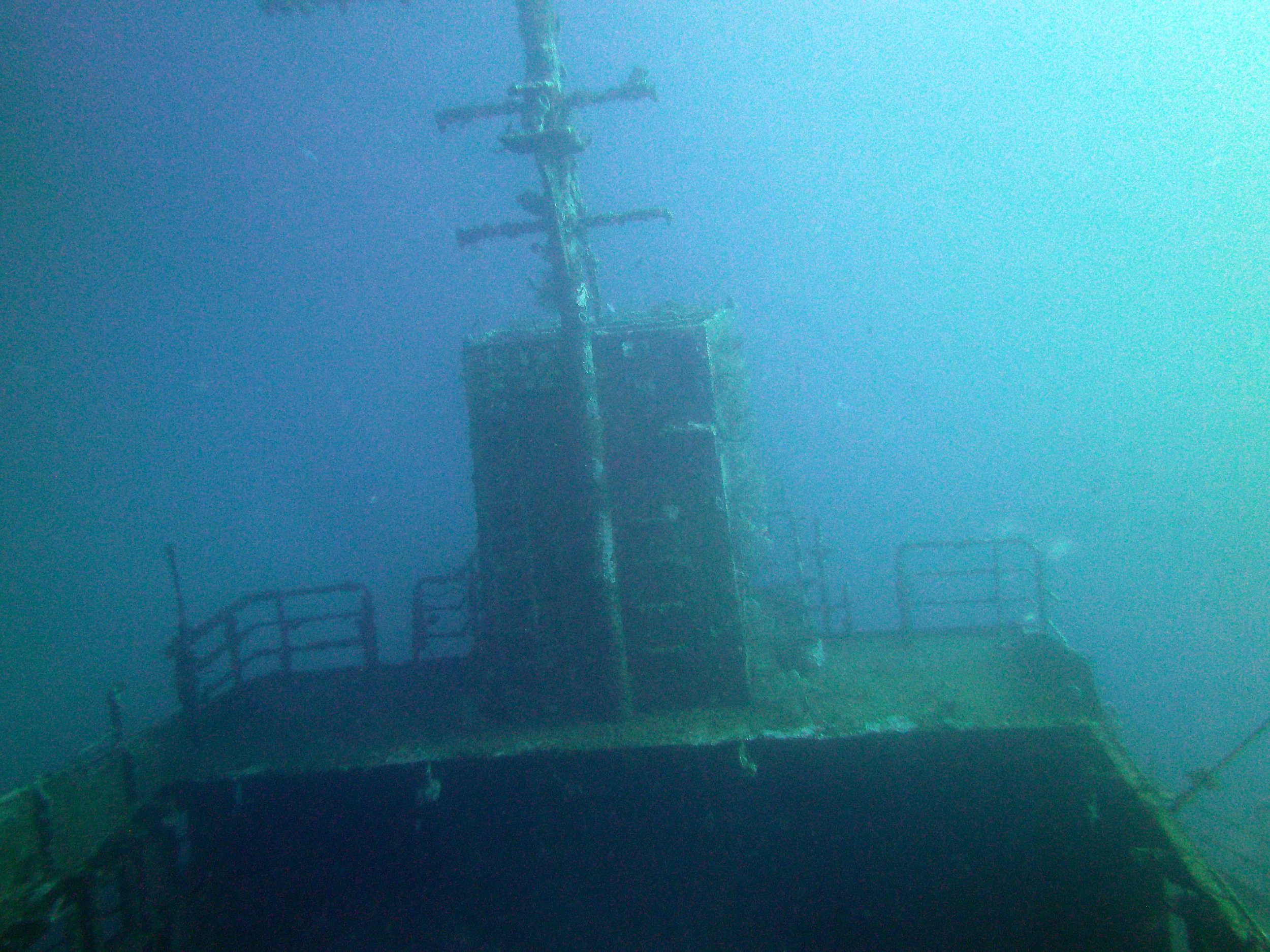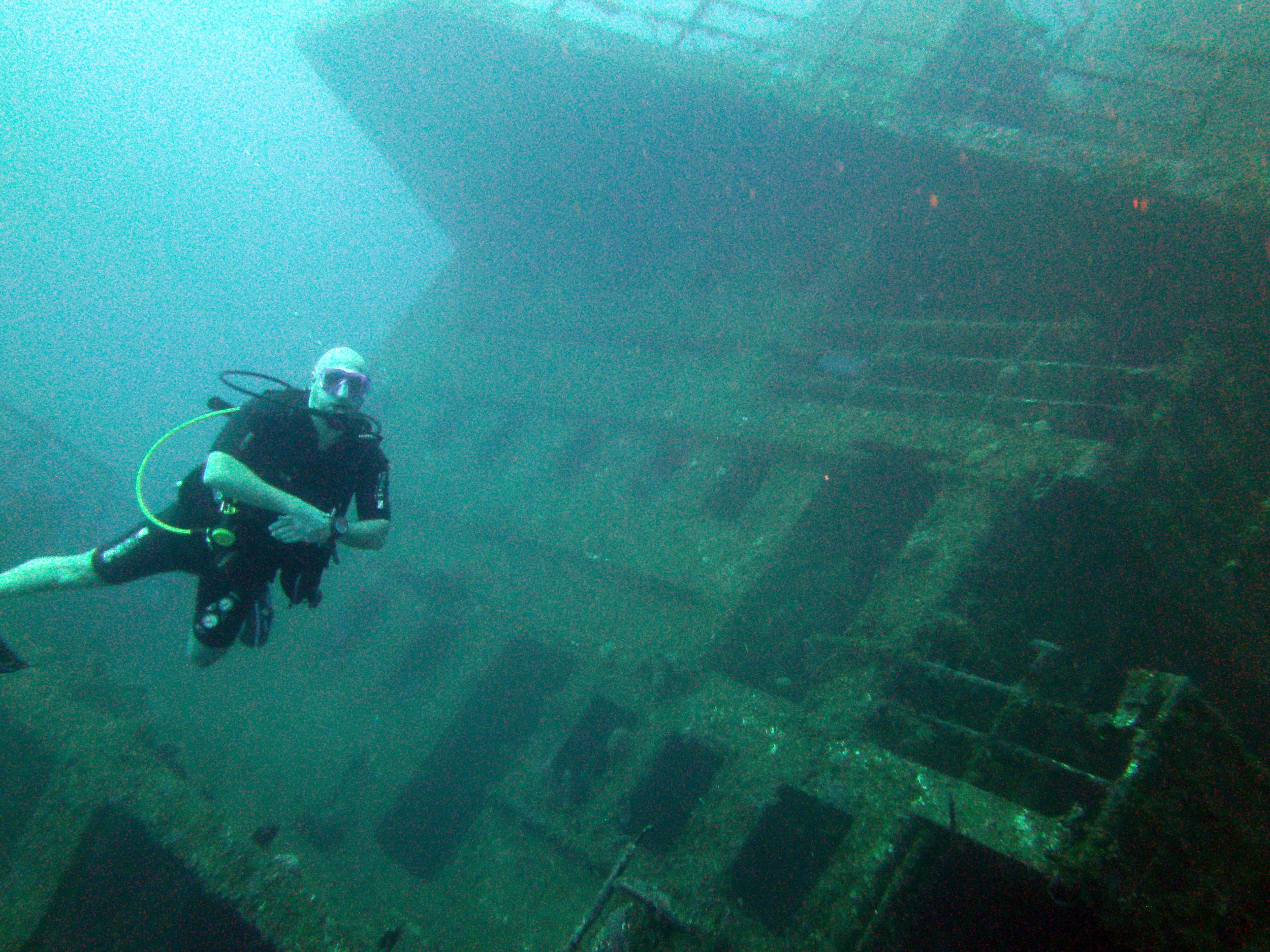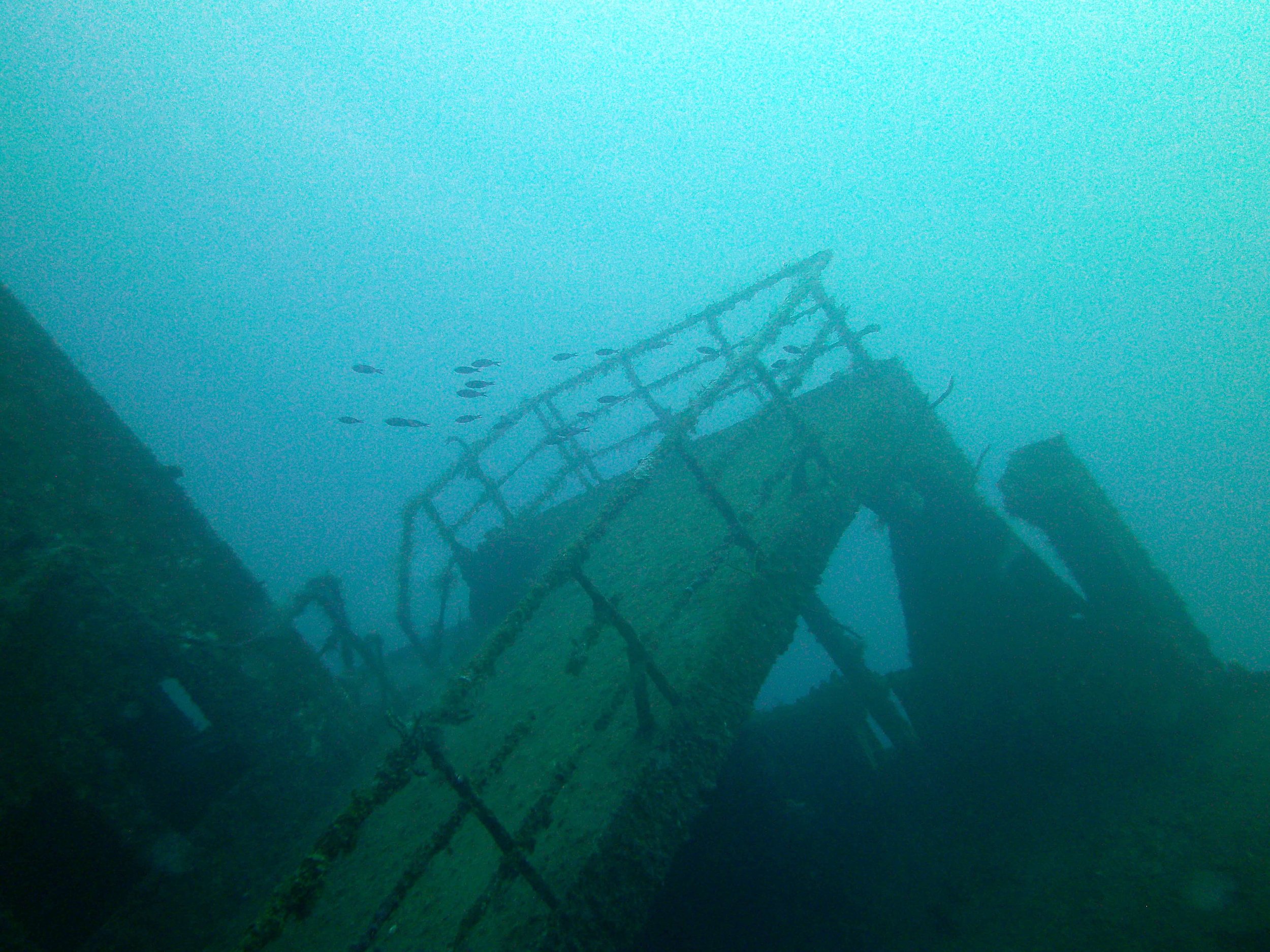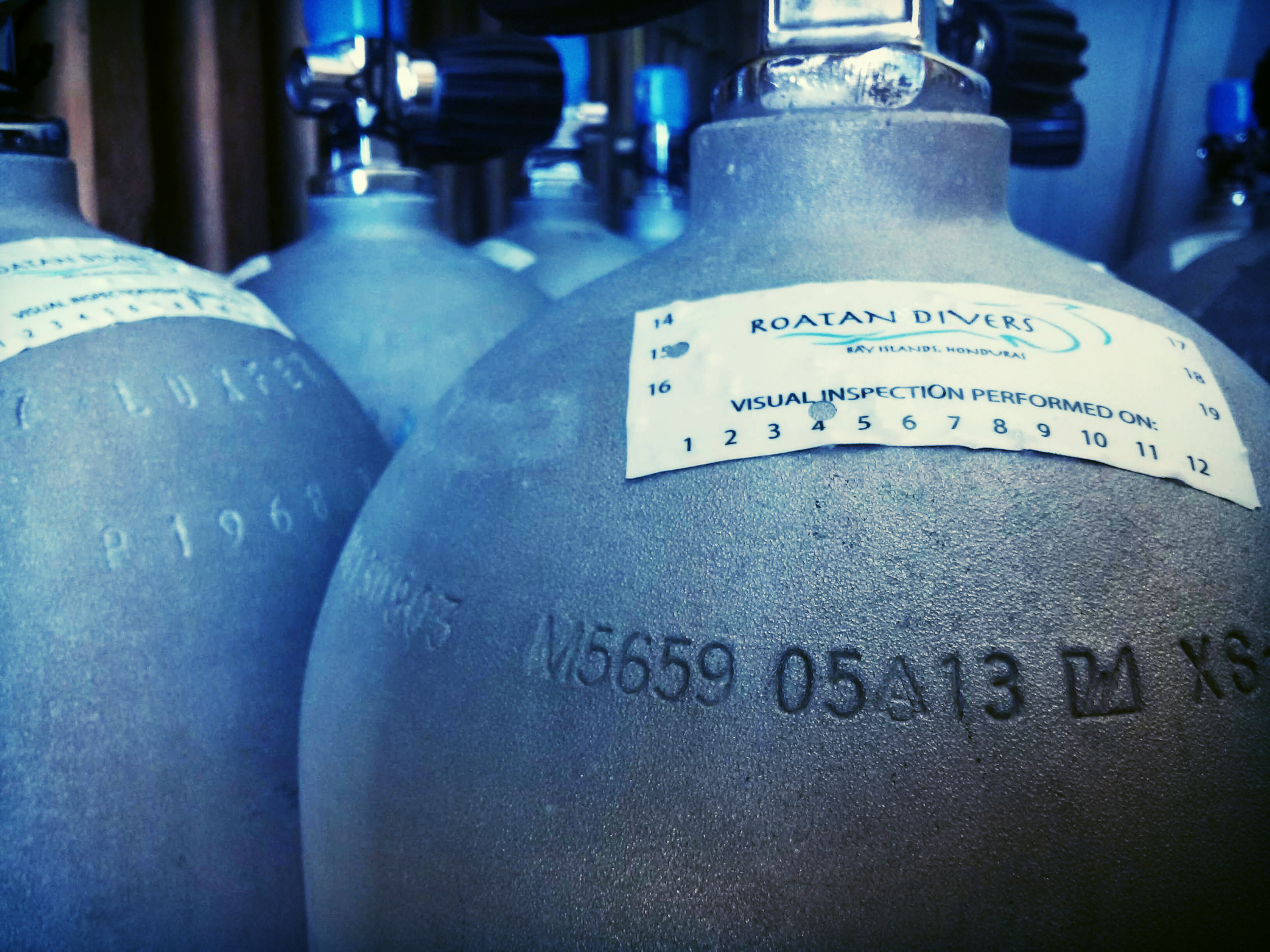How Being a PADI Rescue Diver Changes You
Being a PADI Rescue diver is about giving you the knowledge and skills to better care for yourself as well as other divers both in and out of the water. Divers describe this course as the most challenging, yet rewarding courses they have ever taken. If you're considering diving in, here's what you need to know about becoming a Rescue Diver.
Being a Rescue Diver is about giving you the knowledge and skills to better care for yourself as well as other divers, both in and out of the water. Divers describe this course as the most challenging, yet rewarding course they have ever taken. If you're considering diving in, here's what you need to know about becoming a PADI Rescue Diver.
It Changes Your Perspective
The PADI Rescue Diver course teaches you how to prevent and manage problems in and out of the water. We teach you how to spot warning signs that a diver might be nervous, unwell or potentially about to panic. This ability to anticipate a risky situation, whether it's from other divers or yourself, is extremely valuable. Now you're aware and engaged in a whole new way when you go diving - and we don't just mean in the water! From being on land, to the boat, to equipment, you now see things from a different perspective. Even your outlook and criteria on how you choose dive centers may be different. Together, all of these elements lead you to going diving with far more freedom and increased capabilities as a PADI Rescue Diver.
It Increases Your Confidence
With this new perspective, expect to feel a new level of confidence as a recreational diver. We teach you how to identify possible scenarios like a tired diver, panicked diver and even a non responsive diver and how you would respond to each accordingly. By learning these skills, you are now equipped with the knowledge to help others, and a greater self-awareness in recognizing your own potential problems. This increase of confidence, and knowing that you can help others if needed, is a priceless feeling you can take with you anytime you go diving.
You Become a Better Buddy
Which divers have you admired? All divers have, at some point, wanted to become a better diver. For many, it's the desire to improve buoyancy or air consumption, but as more experienced divers can tell you, it's all about having a good dive buddy. During this course, you learn to become a better buddy by practicing problem solving skills until they become second nature. Keep in mind, that even when you go fun diving, there will likely be more qualified diving Professionals around you like a PADI Divemaster or Instructor. For those divers interested in becoming a PADI Professional, the Emergency First Response & Rescue course is usually the first step in doing so.
Breaking Down the PADI Rescue Course
Rescue students on a dive with Roatan Divers
The PADI Rescue Diver course takes roughly three to four days.
Through knowledge development and rescue exercises, you learn what to look for and how to respond. These scenarios take place underwater, at the surface, and even extend to the shore. Finally once you have practiced how to handle these scenarios, you will go on two open water dives to reinforce your new knowledge and skills.
One of the most fun elements to the PADI Rescue Diver course is the instructor's ability to get creative in how they test your response time and thought process. The goal is to simulate as closely, but safely as possible, potential rescue situations. The Emergency First Response (EFR) Primary & Secondary Care is a prerequisite along with being a PADI Advanced Open Water Diver or PADI Adventure Diver. As for minimum age, younger divers between 12-14 years old are able to work towards a Junior Rescue certification.
Short on time? If you'd like to cut down on course time to take advantage of your time on the island, consider doing PADI eLearning through us to get all your bookwork done ahead of time so you can dive in right away!
If you're ready to start in on a challenging but fun scuba course that helps change your perspective, increase your confidence and generally makes you a better dive buddy, contact us today to get started!
3 Roatan Sites You Should Dive on Nitrox
Enriched air contains a higher oxygen content and lower nitrogen content air does, giving a diver the ability to extend their no-decompression limit (or dive time). For a few of our dive sites, given their topography and depth, we find it more enjoyable to dive on enriched air Nitrox (EANx32).
One of the many perks of diving on Roatan is the high volume of dive sites available in close proximity to land, with calm conditions and reefs starting shallow so that that we can easily dive on air.
Despite that fact that most of our dive sites are conducive to diving on air, we have a lot of Nitrox certified divers who like to dive on enriched air because of its many benefits. While it all comes down to personal preference, there are a few dive sites here on Roatan that we highly recommend diving on Nitrox in order to enjoy longer bottom times.
Enriched air contains a higher oxygen content and lower nitrogen content air does, giving a diver the ability to extend their no-decompression limit (or dive time). For a few of our dive sites, given their topography and depth, we find it more enjoyable to dive on enriched air Nitrox (EANx32). Having your Enriched Air Diver certification and diving on Nitrox will allow you to explore these sites to their fullest and to ensure a conservative profile.
1. The Odyssey Shipwreck
This cargo ship measures 300ft/100m in length, is about a 20 minute boat ride from West End. Sunk in 2002, the wreck sits on the sand at 110 ft/30.5m, and diving on Nitrox allows you to explore the length and structure of this ship with ample no-decompression time to spare.
For example, according to the NOAA (National Oceanographic and Atmospheric Association) no-decompression dive tables, a diver using Nitrox 36 (or NOAA Nitrox II) may stay up to 50 minutes at 90ft/27m of sea water, while a diver using air may only stay a maximum of 30 minutes at this depth.
2. The Point
This is a top requested dive site from divers and a staff favorite, too! Less than a 10 minute boat ride from West End, this site encompasses the southern point of the island. It is famous for its giant barrel sponges, sea fans, and its nutrient rich water that brings in tons of fish ready to feed. Due to the topography of this site, we like diving it on Nitrox because it allows us to explore the wall, as well as the large plateau area (the area of this site that The Point is famous for) with an average depth of 50ft/15m.
Weather conditions for this site can vary daily, so we like to check the conditions to ensure the wind and potential currents are appropriate to still make it a fun and enjoyable dive!
3. The Seamounts of Cayos Cochinos
The seamounts of Cayos Cochinos lie 18 miles off the point of Roatan and can be reached by special two-tank charter trip (weather permitting), and simply phenomenal when the conditions are right. None of the seamounts break the surface, and the diveable mounts peak between 70ft/21m and 40ft/12m in depth. To get the most bottom time out of each dive, we strongly encourage Nitrox for at least the first dive. The coral at the seamounts is healthy and vibrant, and you have the opportunity to see lots of different schools of fish hanging off the reef as they feed.
Now, just because we recommend Nitrox for these dive sites does not mean you can't dive them on air. We simply think that these sites in particular are more enjoyable when you can spend longer enjoying the deeper topography of these sites!
Not a certified Nitrox diver yet? No worries, it's a fun, easy and enormously beneficial course! The PADI Enriched Air Diver certification can be done in a few hours, so it won't have to take up your entire vacation. Check with your local dive shop or drop us a line, and we would be happy to get you diving on EANx32!
Am I Ready To Do My PADI Advanced Open Water Course?
For many Open Water Divers, the Advanced Open Water course can seem like an elusive or possibly intimidating certification. Do I have what it takes to be an advanced diver, and why should I even take a course like this?
Fear not, diving friends! Let's shed some light on what it takes to complete your PADI Advanced Open Water course.
For many Open Water Divers, the Advanced Open Water course can seem like an elusive or possibly intimidating certification. Do I have what it takes to be an advanced diver, and why should I even take a course like this?
Fear not, diving friends! Let's shed some light on what it takes to complete your PADI Advanced Open Water course. Enthusiasm is not required, but it's a huge plus!
The Advanced course takes a minimum of two days and consists of five PADI Adventure dives.
PADI offers many types of Adventure Dives to choose from. Underwater Navigation and Deep Dive are required, giving you three more Adventure Dives that you can choose. Here at Roatan Divers, the most popular Adventure Dives we teach are the Night Dive, Drift Dive, Underwater Naturalist, and Peak Performance Buoyancy.
Classroom time: For the Advanced course, you complete the Knowledge Reviews for the Adventure Dives you have chosen, then after a thorough briefing from your PADI Instructor, you go on an open water dive to apply what you have learned. Unlike the PADI Open Water Diver course, there are no confined water skills.
Why should I become a PADI Advanced Open Water Diver?
We love getting this question! One of the most common motivators for divers to pursue this certification is their desire to go on more elaborate, adventurous dives! Perhaps a deep dive to the El Aguila ship wreck that sits at 30m/100 feet? Maybe a night dive to catch the magical bioluminescence, or better buoyancy to give you control and confidence to avoid unwanted contact with the reef when looking at smaller marine life.
The very popular Deep and Night Dives can be a bit more complex, so they require additional knowledge and safety aspects to consider. This course allows you to expand your skills and confidence to make you a more well rounded scuba diver.
One of the biggest struggles for new divers is gaining better control their positioning and buoyancy on a dive. The Peak Performance Buoyancy dive is a great opportunity to experiment and challenge yourself in this area. It can even help improve your air consumption along the way!
Common misconceptions
Let's clear up a few of the myths that might be stopping you from starting your PADI Advanced Open Water course.
There is no minimum number of dives required if you're already a PADI Open Water or Junior Open Water Diver.
As a PADI Open Water Diver you are certified to a depth of 18m/60ft, so if you'd like to go deeper, additional training is strongly encouraged.
Open Water divers over 15 years old can participate in ALL of the Adventure Dives that are available in the PADI Advanced Open Water course. After completing the course, they will be certified to dive to a depth of up to 30m/100ft.
Junior Open Water divers over the age of 12 can participate in many of the Adventure Dives as well. After completing the Advanced course they will be certified up to 21m/70ft, which will automatically upgrade to 30m/100ft when they turn 15.
Now that you have a better understanding of what the PADI Advanced Open Water course consists of now, you can talk to your local dive shop if this is the right course for you!
If you're interested in speaking to us or have any additional questions, please contact us today!
Tips for Maintaining Scuba Cylinder Health
Out of all your scuba diving equipment, your scuba cylinder is the unsung hero of it all. We have a tendency to focus on the quality and maintenance of the wetsuits, BCDs and regulators of wherever we go diving, but not on the most important feature of your scuba equipment, and your lifeline.
Out of all your scuba diving equipment, your scuba cylinder is the unsung hero of it all. We have a tendency to focus on the quality and maintenance of the wetsuits, BCDs and regulators of wherever we go diving, but not on the most important feature of your scuba equipment, and your lifeline.
Scuba cylinders are filled with filtered, compressed air. The air is taken through the air intake of the compressor and passes through a filtration system, where particles and moisture are filtered out of it. However, even with the proper filtration systems, scuba cylinders still need to be inspected once in a while to ensure that they are in proper working order. The two inspection requirements are the visual inspection and hydrostatic test.
1. Visual inspection
Scuba cylinders should be visually inspected once a year by a qualified visual cylinder inspector. In a visual inspection, we empty the tank, take the valve off the top of the cylinder and take a look inside for corrosion, aluminum alloy build-up and moisture. Whenever you dive somewhere, make sure to check for the visual inspection sticker. If it's not there, ask the dive center when their last visual inspection was.
Always check visual inspections before you dive
2. Hydrostatic testing
Scuba cylinders should normally be tested every two to five years, based on local laws and regulations. In a hydrostatic test, the cylinder is normally filled to 5/3 of its normal fill capacity, and then cylinder walls' flex is tested. Hydrostatic testing is imperative to maintaining the integrity of tanks, and therefore imperative to maintaining your safety. Scuba cylinders will have the last date of hydrostatic testing embedded into them. Most local laws and regulations will not exceed five years for hydrostatic testing requirements, so if the last date of testing was over five years ago, make sure to ask about it.
This tank was hydrostatically tested in May 2013
Here are some tips to help maintain your scuba cylinders:
1. Don't ever empty a tank completely.
Pressure inside the tank prevents water from entering it. Make sure never to empty your tank too quickly either, as that can cause condensation to build up on the inside and outside.
2. Have your tanks filled only by reputable scuba air stations
If a guy is filling scuba tanks out of the back of his van, the air probably isn't going to be super clean. Remember, even minute percentages of contamination, such as carbon monoxide, will be greater under pressure, so you want to make sure your air is clean to prevent such issues.
An analysis certificate from Trace Analytics, based on a quarterly air sample
Air stations should get their air tested, preferably quarterly. We use Trace Analytics, an independent testing lab in Texas. We send them air samples every three months, and they send back the results to let us know if the air passes. Air testing is a great way of also checking on the compressor's health, because if the air doesn't pass, it's a sign that there may be something wrong with the compressor as well.
3. Store your cylinders in a cool, dry place
Extreme heat is the death of scuba cylinders, so avoid putting them under extra pressure and keep them out of the sun. Also make sure to keep them standing in a cool, dry place where they can't get knocked over.
Our scuba cylinders are such an important part of our scuba equipment, so make sure not to neglect them! Remember, maintenance is key when it comes to anything, so keep all of your scuba gear well-maintained and serviced and you will get many years of diving with them.
Happy diving!












